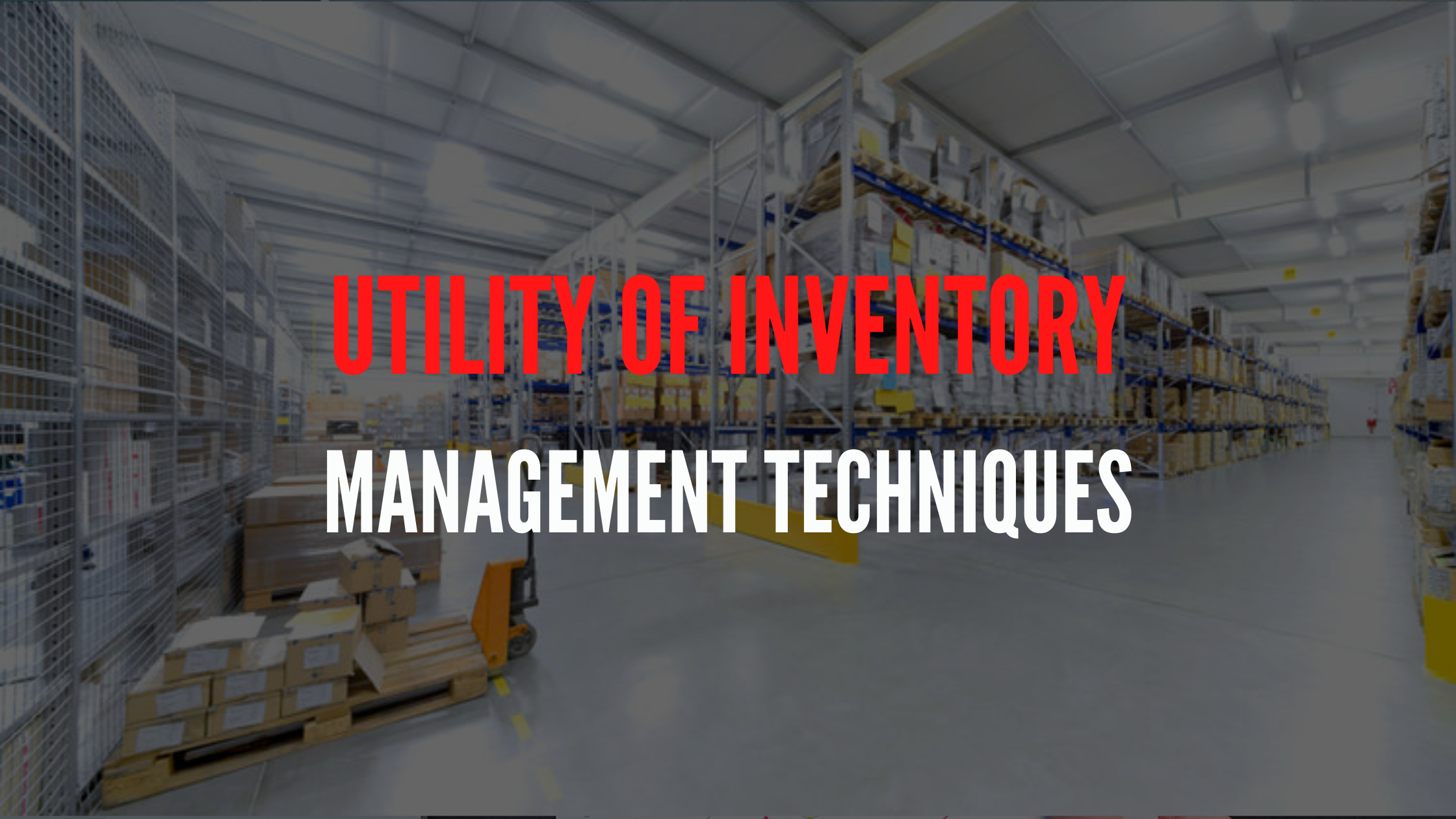
Inventory changes constantly. Throughout each day, sales, returns, new receipts – even damage and theft – affect your inventory levels.
Effectively managing inventory gets harder as your business scales and the amount of inventory you are handling increases.
Taking advantage of technology can make things easier for yourself and your employees. Thus, an inventory management system is invaluable for businesses of any scale and dimension.
What Is Inventory Management?
Inventory management refers to the process by which a company can track the amount of product on the warehouse shelf, in-store, or sitting with other retailers and distributors.
Consequently, it is possible to have the right number of units in the right place, at the right time, and for the right price.
When effectively tracking and controlling physical inventory, it is possible to know how many of each item is in store, when you might be running low on products and whether you should replenish that item to keep selling it.
An inventory account typically consists of four separate categories:
- Raw materials — represent various materials a company purchases for its production process. These materials must undergo significant work before a company can transform them into a finished good ready for sale.
- Work in process (also known as goods-in-process) — represents raw materials in the process of being transformed into a finished product.
- Finished goods — are completed products readily available for sale to a company’s customers.
- Merchandise — represents finished goods a company buys from a supplier for future resale.
Need for Inventory Management System
An inventory management system can help to:
- Manage business’s inventory and stock items keeping exact track of assets and their valuation.
- Keep business more organized.
- Ascertain the products that are moving and those that are selling slowly.
- Can analyse seasonality of sales.
- Increased tracking and transparency.
- Can evaluate the strengths and weaknesses of business.
- Can help improve your relationships with vendors.
- Both you and the vendor are kept in-the-know of your ordering needs. You can set up your system so certain items are automatically re-ordered at specific intervals based on order history.
- Can schedule deliveries in a much more systematic and organized way.
How Inventory Management Works
The goal of inventory management is:
- To understand stock levels and stock’s location in warehouses.
- In the warehouse, inventory management tracks stock receipt, picking, packing and shipping.
Inventory Management Techniques
Here is a list of some of the most popular and effective inventory management techniques you can use to improve your business.
Economic Order Quantity
Economic order quantity is the lowest amount of inventory a business must order to meet peak customer demand without:
- Going out of stock.
- Producing obsolete inventory.
Economic order quantity uses three variables:
- Demand.
- Relevant ordering cost.
- Carrying cost.
Minimum Order Quantity
Minimum order quantity (MOQ) is the lowest set amount of stock that a supplier is willing to sell.
The purpose is to allow suppliers to increase their profits while getting rid of more inventory more quickly and weeding out the “bargain shoppers” simultaneously.
ABC Analysis
ABC analysis of inventory is a method of sorting inventory into 3 categories according to how well they sell and how much they cost to hold:
- A-Items – Best-selling items that don’t take up all warehouse space or cost.
- B-Items – Mid-range items that sell regularly but may cost more than A-items to hold.
- C-Items – The rest of your inventory that makes up the bulk of inventory costs while contributing the least to your bottom line.
ABC analysis of inventory helps businesses to keep working capital costs low because it identifies which items you should reorder more frequently and which items do not need to be stocked often – reducing obsolete inventory and optimizing the rate of inventory turnover.
Just In Time
Just-in-Time Inventory Management is simply making what is needed, when it’s needed, in the amount needed.
Benefits
- Minimize costs such as rent and insurance by reducing your inventory.
- Less obsolete, outdated, and spoiled inventory.
- Reduce waste and increase efficiency by minimizing or eliminating warehousing and stockpiling, while maximizing inventory turnover.
- Maintain healthy cash flow by ordering stock only when necessary.
- Production errors can be identified and fixed faster.
Safety Stock Inventory
Safety stock inventory is a small, surplus amount of inventory the companies keep on hand to guard against variability in market demand and lead times
Benefits
- Protection against unexpected spikes in demand.
- Prevention of stock outs.
- Compensation for inaccurate market forecasts.
- A buffer for longer-than-expected lead times.
FIFO and LIFO
FIFO and LIFO are accounting methods used to value inventory and report profitability.
FIFO (first-in, first-out) is an inventory accounting method that says get rid of your oldest inventory first.
LIFO (last in, first out) is an inventory accounting method that says you get rid of the newest inventory first.
Reorder Point Formula
A reorder point formula suggests when you have reached the lowest amount of inventory you can sustain before you need more months.
Batch Tracking
Batch tracking is sometimes referred to as lot tracking It is the process for efficiently tracing goods along the distribution chain using batch numbers.
Benefits
- Easy and fast recall.
- Streamlined expiry tracking.
- Improved relationships with suppliers.
- Fewer accounting errors from manual tracking.
Consignment Inventory
Under Consignment Inventory, the consignor (a vendor or wholesaler) agrees to give his goods to a consignee (usually a retailer) without the consignee payment upfront.
The consignor still owns the goods, and the consignee pays for the goods only when he sell.
This inventory management technique creates a win-win partnership between suppliers and retailers as long as they’re both willing to share the risks – and rewards.
Benefits for Vendors:
- New markets.
- Low Inventory carrying costs.
- Direct-to-Retailer shipping.
Benefits for Retailers:
- Lower cost of ownership.
- Minimal risk.
- Improved cash flow.
Perpetual Inventory Management
Perpetual inventory systems track sold and stocked inventory in real-time and update accounting system whenever:
- A sale is made.
- Inventory is used.
- New inventory has arrived.
Benefits
- Proactive monitoring of inventory turnover.
- Manage multiple locations with ease.
- More informed forecasting.
Drop shipping
Dropshipping is a business model that allows business to sell and ship products it does not own.
Your suppliers – wholesalers or manufacturers – produce the goods, warehouse them, and ship them to your customers for you.
Benefits:
- Low start-up costs.
- Low cost of inventory.
- Low order fulfilment costs.
- Sell and test more products with less risk.
Lean Manufacturing System
Under the Lean Manufacturing System, Lean” is a system for maximizing product value for the customer while minimizing waste without sacrificing productivity.
LMS complies with 5 principles:
- Value – A company delivers the most valuable product to the customer.
- Value Stream – Map out the steps and processes required to manufacture those valuable products.
- Flow – Undergo the process of ensuring all value-adding steps flow smoothly without interruptions, delays, or bottlenecks.
- Pull – Products are built on a “just-in-time” basis.
- Perfection – Make process improvement a core part of company ‘culture.
Sigma
6 sigma or Six Sigma is a data-driven process that seeks to reduce product defects down to 3.4 defective parts per million, or 99.99966% defect-free products over the long term.
The objective is to produce nearly perfect products for the customers.
By using statistical models, 6 Sigma practitioners will methodically improve and enhance a company’s manufacturing process until they reach the level of 6 Sigma.
The first and most-used method in Six Sigma is a 5-step process called DMAIC:
- Define
- Measure
- Analyse
- Improve
- Control
Lean Six Sigma
Lean Six Sigma is the fusion of Lean Manufacturing with Six Sigma to create a complete system that removes waste and reduces process variation for streamlined manufacturing and optimal product output.
Demand Forecasting
Demand forecasting is a process of predicting:
-what the customers will buy and how much they will buy.
From production planning to inventory management to entering a new market, demand forecasting will help better decisions for managing and growing business.
In Retrospect
There is absolutely no doubt that Inventory Management is vital to the success of any business. Especially so, when competition is getting stiffer bypassing each day.
Taking a systematic approach is the only way to ensure accuracy and efficiency in inventory management.
You must employ an inventory management system to stay in charge of your supply chain. This will ensure that the damaging twin threats of overstocking and understocking are averted.



